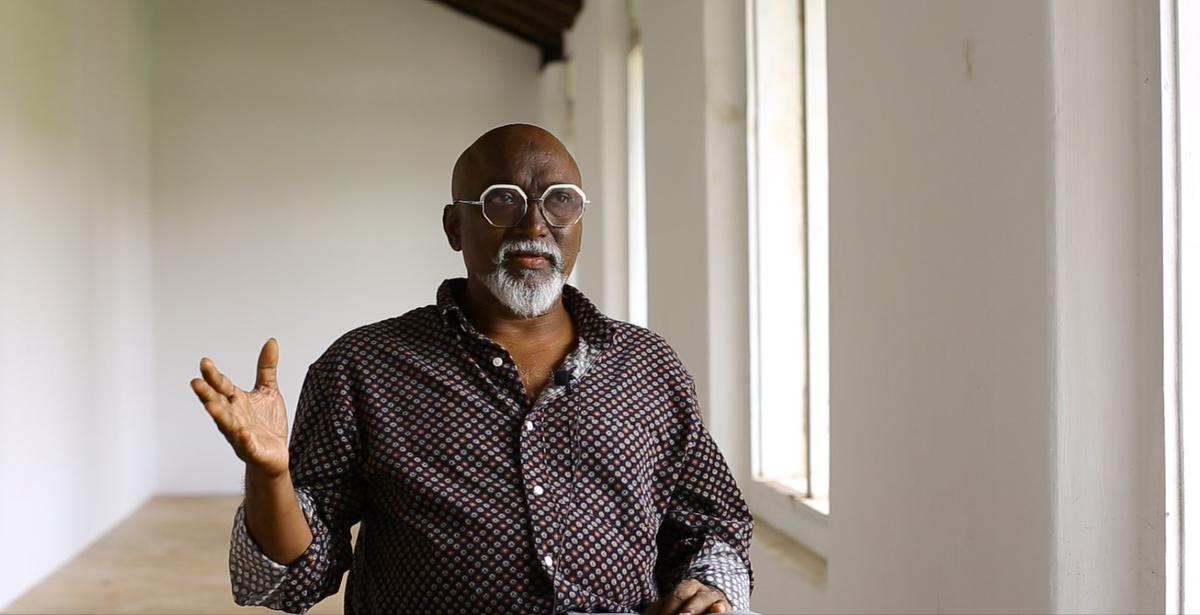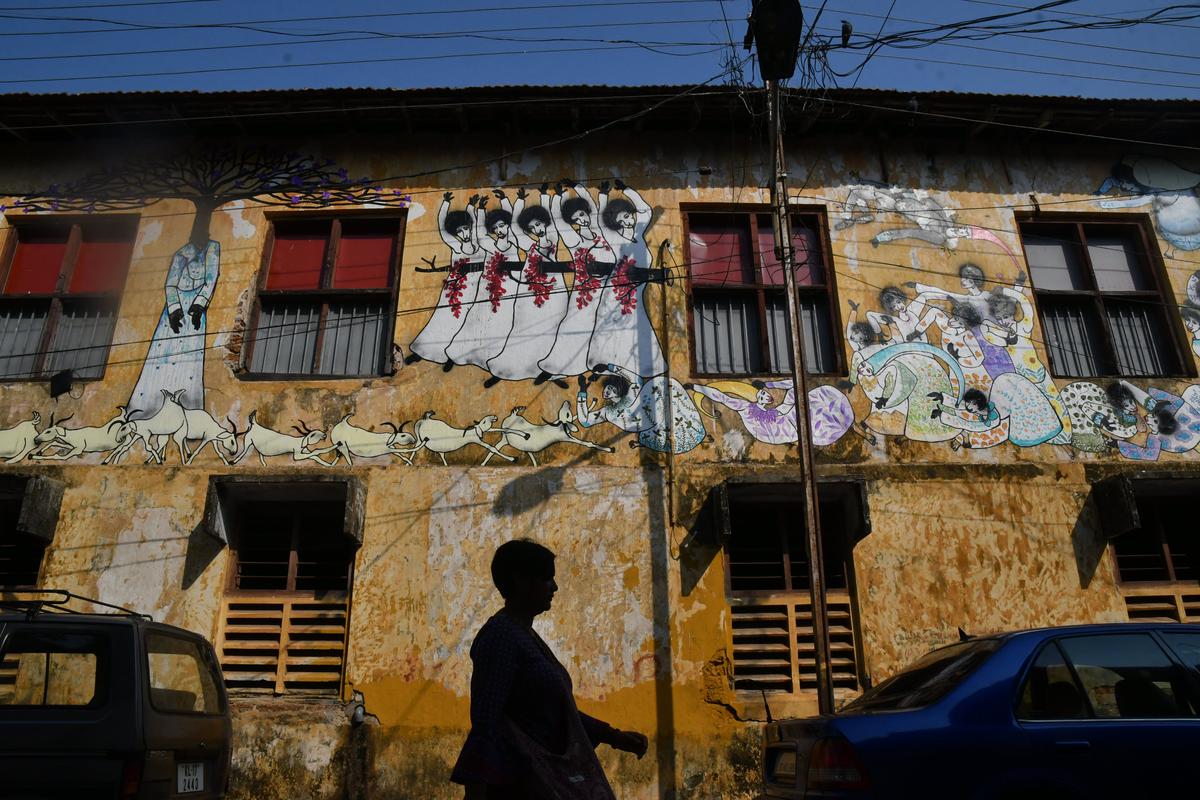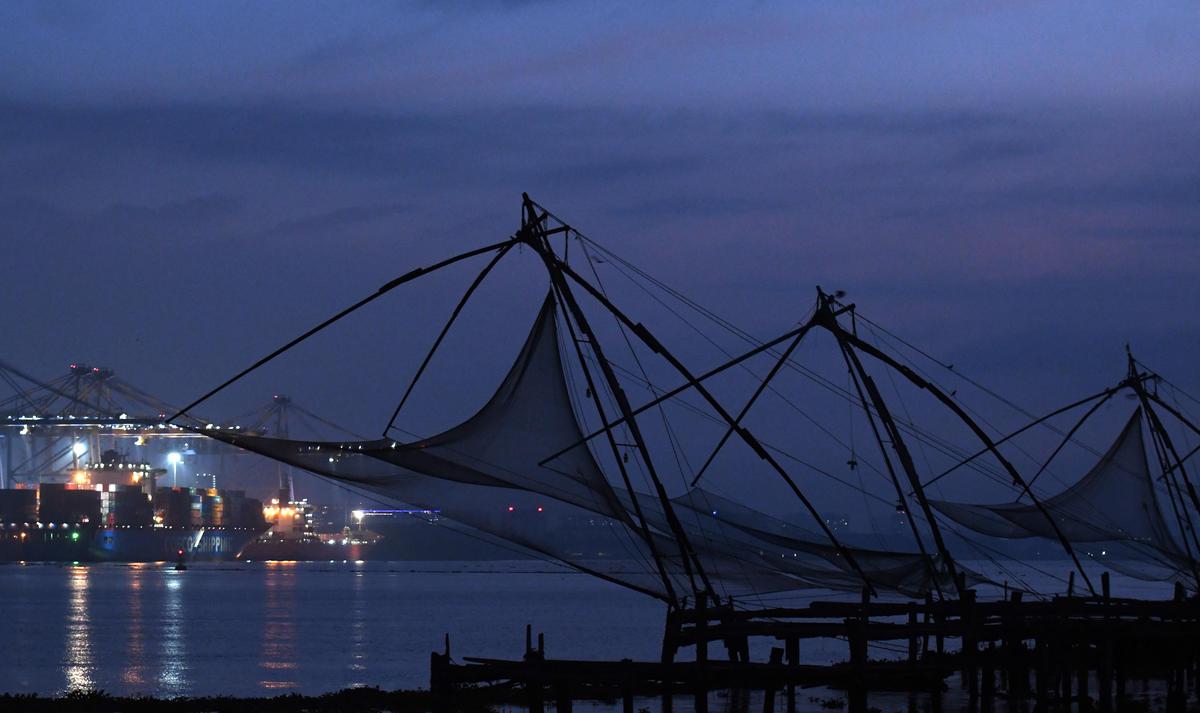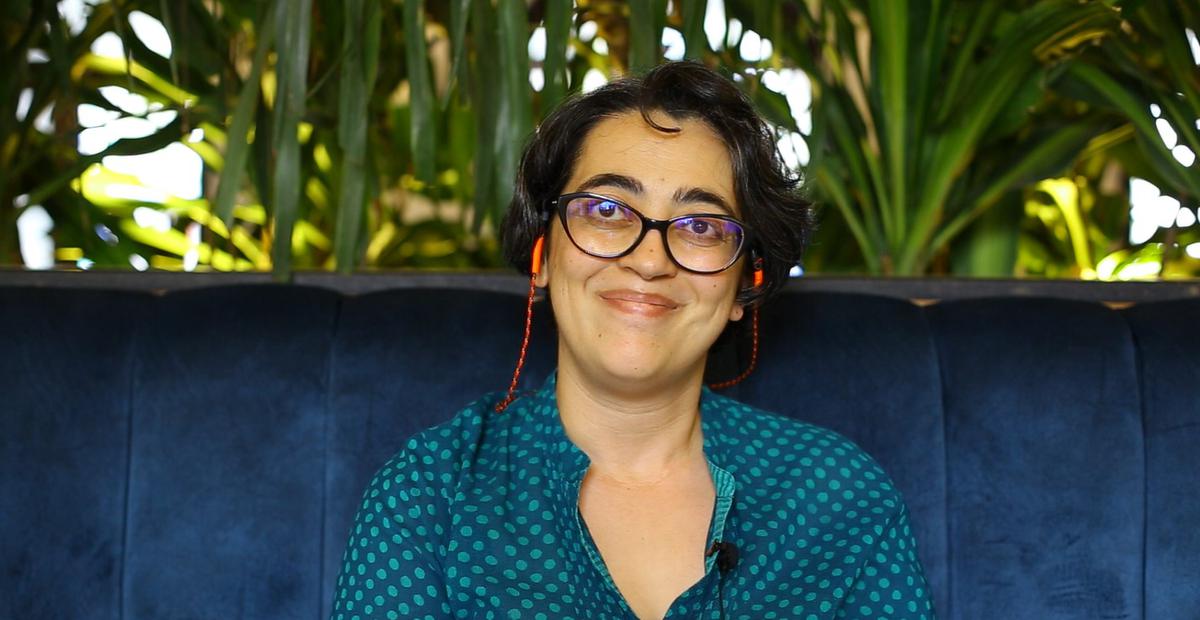The Chinese fishing nets, centuries-old spice warehouses, ancient centres of worship and colonial bungalows lining the cobbled streets of Fort Kochi and Mattancherry, all speak of a bygone era.
However, from December 12 to April 10 next year, these streets, warehouses and old villas will turn into galleries of astounding art, with installations by more than 90 artists from around the world, as part of the Kochi-Muziris Biennale .
But why have an art festival here, in this dilapidated old trade centre lying on the fringes of a modern Metro city?
As a space for art

Bose Krishnamachari
| Photo Credit:
ASWIN VN
Co-founder of Kochi-Muziris Biennale, Bose Krishnamachari says Kochi was the obvious choice of venue when the idea for India’s first biennale was mooted more than a decade ago. He says, “Location plays an important role when you create a festival like a biennale, and Fort Kochi and Mattanchery is an ideal location not only for creative projects, but even sociologically it’s multiculturalism gives us so much confidence.”

A tourist walks past a building with graffitti art drawn for the Kochi-Muziris Biennale 2018, at Fort Kochi
| Photo Credit:
THULASI KAKKAT
Shubigi Rao, the Singaporean artist who is curating this edition of the biennale, resonates Bose’s view, but adds that the warehouses of Fort Kochi and Mattancherry can also be an artistic challenge. She says, “It can be hard for artists who are used to working in a white-cubian, or museum-like spaces. However, for those who prefer to work by responding to the environment, these venues are beautiful.”
A history tied to Muziris
Paradesi Synagogue built in 1568 and located in the Jew Town area of Mattancherry is a symbol of the region’s cosmopolitan history
| Photo Credit:
ASWIN VN
The history of this land, lying at the mouth of the cochin harbour, goes back to well beyond the colonial era. It is believed that the harbour was naturally formed after the great flooding of Periyar river in 1341 AD. While the disaster created the conditions for a new trade centre in Cochin, it is also believed to have destroyed the mythical port city of Muziris, which used to be located some 30 kilometres north of the present-day Kochi.
A Chinese fishing net fact
The parts of the nets are still known by their Portuguese names — Kalasandhi, Bolsa, Othara, Bras, Savaya, Arolla, Arasa and Armusan, for example.

Chinese fishing nets (Cheenavalas), the iconic cantilevered nets that were brought to Kochi by the Portuguese in the 15th century, became the indelible signature of Kochi
| Photo Credit:
H VIBHU
Later, in 1503, the Portuguese built Fort Emmanuel that gave Fort Kochi its name. But it was subsequently conquered by the Dutch in 1663 and by the British in 1790. Author and art curator Tanya Abraham, who was born and brought up in Fort Kochi, thinks her home town has a unique spot in the history of Kerala. “It is a place which has brought several cultures from foreign lands. We have other places in Kerala where there was trader. But in terms of so many different communities settling down, and having lasted for all these generations, and their food cultures and religious traditions continuing to last, makes Fort Kochi extremely special,” says Tanya.
She believes that every single aspect of Fort Kochi and Mattancherry is unique — from the diverse architecture to the colours of buildings, there is an unsaid enigma in the air due to the different communities that have been living here since time immemorial.
Challenging the western myth

Shubigi Rao
| Photo Credit:
ASWIN VN
Shubigi says the existence of Kochi and Muziris also puts to rest the notion that cosmopolitanism is a product of colonialism and colonial trade. “There is this idea in Europe and the United States that they are the masters of globalisation, and they are the ones who, through fairly vicious means like colonialism, and by trade as well, brought cosmopolitan ideas, and so on. But, pre-colonial cosmopolitanism existed. The port of Muziris apparently traded as far back as with Mesopotamia and Babylon,” she says, adding that Malabar coast has always looked to the world and it hasn’t looked inwards.
So, this time she wants to bring together ideas from colonial and, most importantly, pre-colonial times to dispel this myth, and show that discourse between places like Kochi and regions around the world have always existed. “For instance, the works of Vivan Sundaram that I have chosen are works he did decades ago when he first travelled to Latin America, and I wanted to just remind people that if I talk about discourse between South America and South Asia, I am not doing anything new. There is a legacy and a history here, and this is just one example of it.”
Stay connected with us on social media platform for instant update click here to join our Twitter, & Facebook
We are now on Telegram. Click here to join our channel (@TechiUpdate) and stay updated with the latest Technology headlines.
For all the latest Life Style News Click Here
For the latest news and updates, follow us on Google News.
